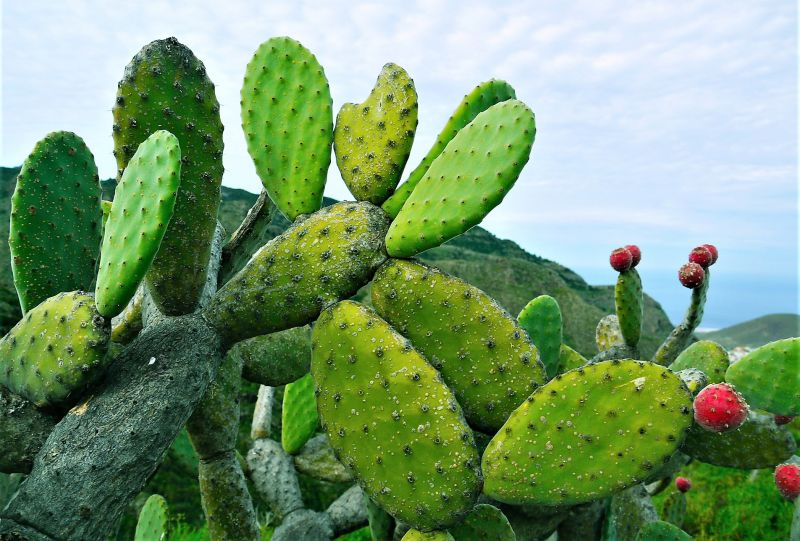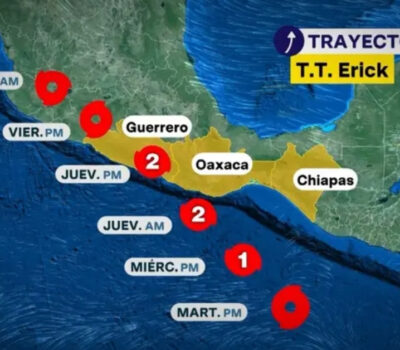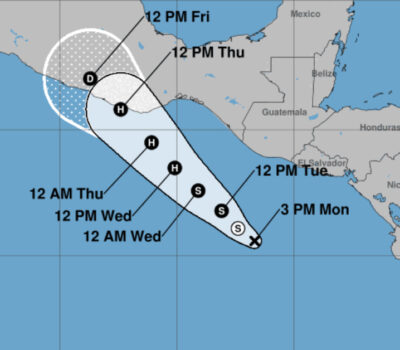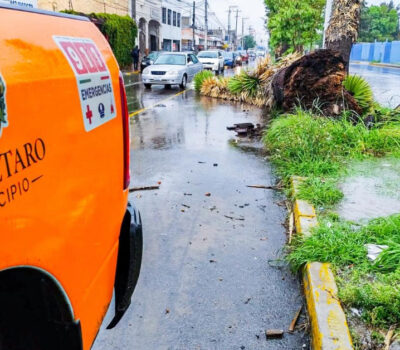When Mexican researcher Jesús Fuentes Rodríguez arrived in Eritrea, Africa; the authorities told him not to go out at night, not to walk alone and not to carry jewelry, cameras or credit cards. “They even gave me a guard that was very uncomfortable,” he recalls. The war between Ethiopia and Eritrea was over but armed people were still on the streets.
Although the two regions are arid, Eritrea does not compare with Saltillo, his hometown. Very close to Asmara, the capital of the country, there are stretches of desert that combine with green hills covered with wild herbs.
The country belongs to the African continent, the region with the most hunger in the world, where one in four people have malnutrition, according to the World Food Program. The problem is also serious when it comes to animals. It is common to see dead cattle, goats, horses and camels because they have no food; On the farms in Eritrea, you do not eat daily.
Jesús Fuentes spent years traveling to Africa to show the nopal (cactus) as a food option. As a child, he never thought that the plant that is the national symbol would take him to another continent. At that time he just liked being near the animals on his grandparents’ ranch, milking the cows and taking care of the goats. “My parents tell me that since I was a kid I liked to see cattle and accompany my grandparents, ” he recalls.
He even gave up his idea of being a doctor, just like his father, because he preferred to dedicate himself to animal health because he liked to be in the country. That is why he decided to study Zootechnology Agricultural Engineering at the Universidad Autónoma Agraria Antonio Narro, one of the most important universities specializing in agriculture in Latin America.
In Mexico, Fuentes Rodríguez lived in one of the driest areas of the country. He wanted to feed animals with the available resources, and after trying several food waste, such as apple hearts, plants like maguey and mesquite were the best option.
Months later, in Nuevo León, he received the invitation of an FAO representative to travel to Africa because they had great expectations about the cactus as a food resource. That’s how in 2000, he made his first visit to Eritrea. That country had ended the war with Ethiopia, and for a couple of years, they allowed the plant to grow out of control in the fields.
In Africa, nopales, known as Opuntia or Pinkly Pear is considered a weed, and in certain regions are still seen as a plague that occupies useful spaces for other crops.
Jesus was more than 30 hours aboard a plane to get there and he went through three continents in just two days, he had never made such a long trip. After crossing almost everyone, he finally arrived in Asmara and was amazed to see a land so distant to what he knew. “I was very excited that what I knew could be useful,” he recalls.
Arriving in Africa was to face a completely different land, although he was accustomed to living in dry weather, the arid land of Eritrea was different. But the people were warm with him, the producers were willing to listen to his advice with a translator as an intermediary.
“The reception was excellent, there was a lot of openness from the people knowing that I was Mexican and that the cactus is Mexican, many did not know it,” explains the researcher.
So, from the first trip, he explored the variants that could be eaten, and Jesus showed the farmers that cows, camels, and goats could consume the Mexican cactus as an alternative to feed themselves daily and not die.
The UAAAN researcher spent six weeks in each country, taught farmers how to build thorn scorchers with home materials, so they could clean the plant and other techniques, also collaborated in academic research, gave lectures at universities and promoted the cactus. Finally, he returned to see the results.
“Thanks to the team of experts, in Eritrea they also learned the ingestion of nopalitos, in brine and vinegar, all to be included in the human diet,” says Dr. Fuentes.
Nopal, the future of food
The nopal represents a hope for farmers and herders in such arid lands, especially with the forecasts that climate change has left, Taguchi explains. “It is estimated that the arid and semiarid regions of the world will become drier in the following decades. 40% of the world is arid lands and more than 2 billion people live in these areas, there is hope that opuntia contributes significantly towards food security “.
Before taking the investigation to other places; in northern Mexico during times of drought, they fed entire colonies of cattle with plants from arid areas and the model had good results. Fuentes Rodríguez explains that this cactus offers many benefits for all living organisms due to its high concentration of phosphorus, calcium, fiber and because it has a high digestibility. It helps diabetes in humans, lowers cholesterol and from it, you get a high concentration of nutrients. However, for its fodder use, it must be added with proteins since it only has 4% of these substances.
In 2017, the Food and Agriculture Organization of the United Nations expressed that opuntias were the food of the future and that they were often undervalued in the countries where they are present. During one of the most intense droughts in Madagascar, nopales were the main sources of food for both humans and livestock.
“In recent years, FAO receives more requests from developing countries for support in the field,” says the agriculture official.
Although there was recently an interest in taking advantage of this resource, they did not know exactly how to do it; in Eritrea they have around 40 thousand hectares of wild cactus that are not used for human consumption.
Although, the plant is native to Mesoamerica, after the conquest began its expansion throughout the world and was taken to Europe by the Spanish, who in turn took it to Africa. The sailors used to take tunas (the cactus fruit) to avoid scurvy, a disease caused by vitamin C deficiency.
Today it is grown in dozens of countries, some have larger plantations than those in Mexico and can be used in many ways, according to the biodiversity page of the Mexican government.
In his travels, Jesús Fuentes Rodríguez noted that around the world there is a special interest in the alternative use of this Mexican plant due to its multiple benefits: Arab countries sell milled prickly pear products such as food supplements, shampoo, oil, and other products.
However, only tunas are consumed, which are a coveted fruit, and the rest of the plant is discarded; in the English portal Fine Food Specialist, a single piece costs sixty Mexican pesos. “In Europe they eat the fruit, but they do not consume nopalito, that is exclusive of Mexico and some other country of Central America like Guatemala. What we are trying to achieve is that it be included in human nutrition, especially in developing countries, as is the case in African countries,” explains the researcher. Makiko Taguchi , an FAO official, comments that despite widespread interest in this cactus, he has seen a much greater boom in animal feed.
Between Mexico and Africa
So far, Fuentes Rodríguez has taken his knowledge of cactus to countries such as Zimbabwe, Angola, South Africa, Namibia and Algeria , but continues to provide training and attending meetings for future decisions. His most recent projects have been in Chile and in Arab countries such as Algeria, Tunisia and Morocco. He was even invited to China to design a model for the use of water lily, since that plant represents an obstacle in some maritime communication routes.
For his part, the doctor continues to carry out research applicable to the most arid areas of the country, for example, in Zacatecas he teaches how to make nutritional blocks to conserve food longer. In addition, he is the coordinator of the North American region of FAO and the International Center for Agricultural Research in Arid Zones ( ICARDA ).
As for the experience of traveling between both continents for more than ten years, he says he feels satisfied because his work has transcended beyond Mexico and fortunate for the opportunity to reach such distant places.
“I missed the chile a lot, yes, but in some countries, they do eat it,” recalls Dr. Jesus Rodriguez, who loves to travel despite all the sacrifice that this requires, and will not stop doing it, because every three years they continue meetings between researchers from around the world.
“For me, everything was fabulous, not only in the technical aspect , but also in the cultural and culinary aspect . It was very interesting and now I have many friends over there,” acknowledges the researcher with joy.
“It is a great satisfaction to be able to wear the national emblem and see that they can take advantage of it in countries so far away”, concludes the researcher.
Orginally published in Spanish on El Universal
When Mexican researcher Jesús Fuentes Rodríguez arrived in Eritrea, Africa; the authorities told him not to go out at night, not to walk . . .












